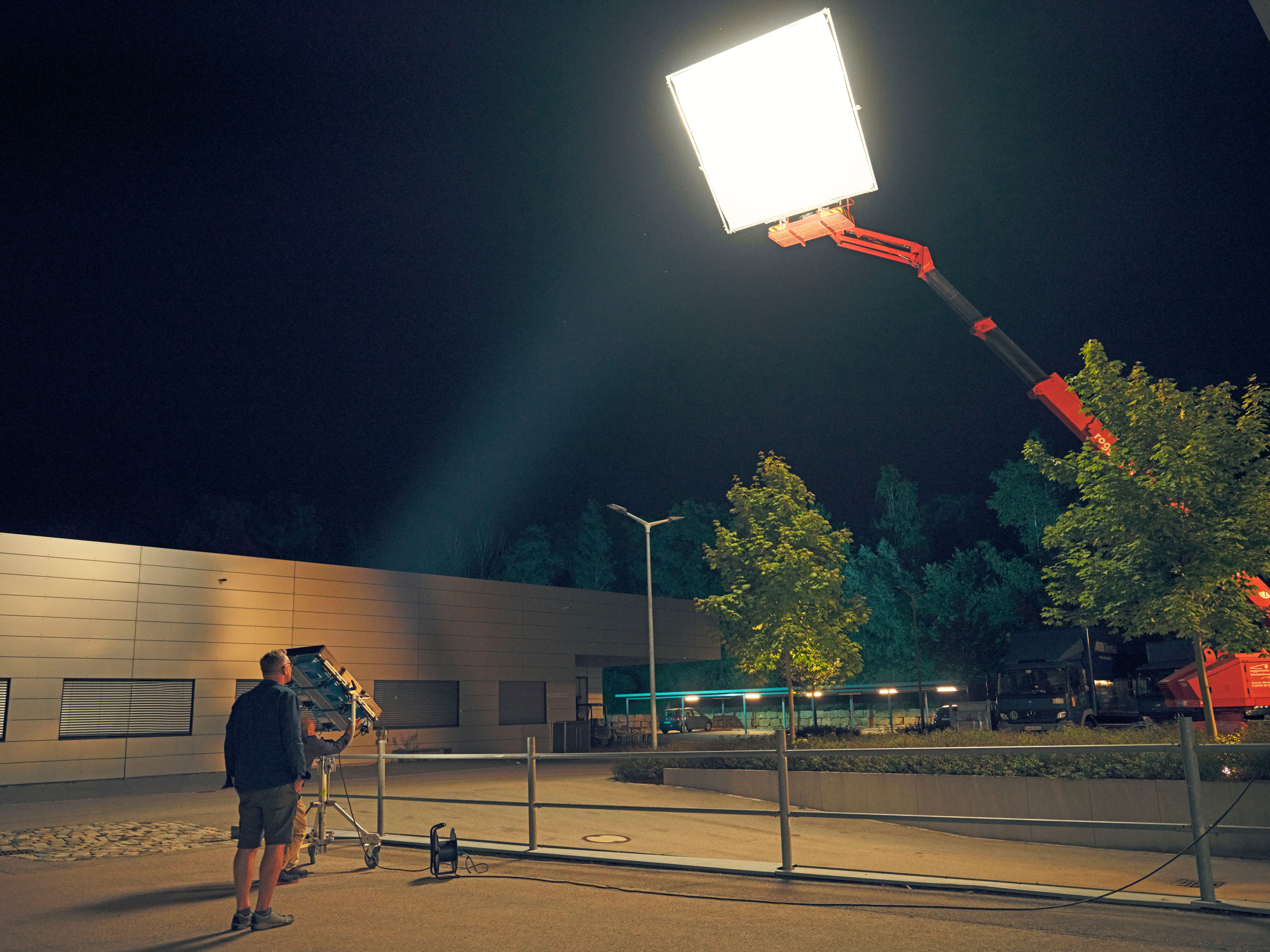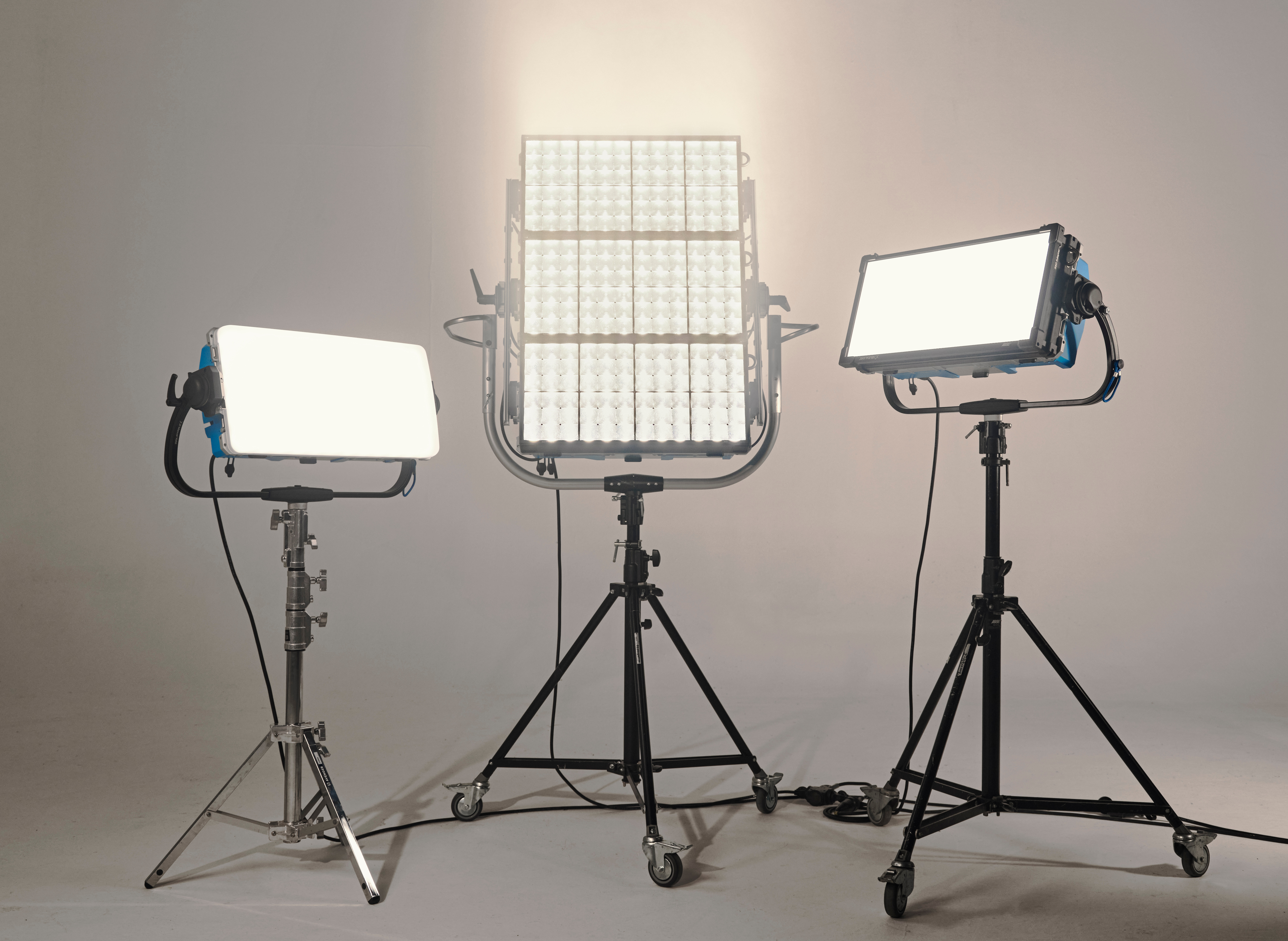Raising the Bar on LED Panel Lights
ARRI’s new SkyPanel X will likely become a 'must have' for rental houses and large studios

The sun has set on incandescent, and the last of the fluorescent tubes are being snatched off the shelves as they too fade to black. HMI still plays a role in the larger fixtures, but their days are likewise numbered. As for LEDs, it’s been an uneven and sometimes clumsy ascension, but there’s no doubt that they’re the current king of light.
The industry stubbed a few toes while fumbling through the gloom of LED’s infancy, but we’re now getting the lighting tools that work the way we do.
Trendsetting
When ARRI’s original SkyPanel S60 first came out in 2015, it set a trend: With its RGBW light engine and built-in effects, it heralded new possibilities for what a light could do. Like most early iterations of any new technology, it wasn’t perfect, but it was good enough. It even met the economic utility of staying serviceable long enough for the rental houses to amortize their investment. Well done! But that was eight years ago. What’s next?
LED components are still improving at rates reminiscent of the early days of computer chips. Other manufacturers have taken advantage of those advances, making the original SkyPanels look dated today. ARRI was apparently just biding their time working on their updated fixture. Sharing little more than the root name—the SkyPanel X is completely new.
ARRI’s new panel follows the practical 2x1 form factor. Rather than offer stair-step increases in fixture size—as they did in the past—they’ve taken a module approach. Different yoke configurations handle one, two or three heads. This approach simplifies everything from manufacturing on down.
To paraphrase Darwin, it’s not the brightest light that succeeds in the wild; it’s the most adaptable. ARRI has created an adaptable light by incorporating the best qualities we’ve seen in several of the best lights, rolling them into a single package. With this measured evolutionary step, they’ve raised the bar again.
The new SkyPanel X won’t be for everyone, but it will likely become a “must have” item at rental houses and large studios. These lights offer some exceptional features.
The professional video industry's #1 source for news, trends and product and tech information. Sign up below.
ARRI is abandoning their RGBW light engine for the broader color gamut of RGBACL (Red, Green, Blue, Amber, Cyan and Lime). This brings their SkyPanel X light engine into line with their Orbiter monolight. This change fits well with the larger landscape of products that ARRI is known for—their cameras. This is where things literally come together.
Unique Advantage
LEDs are discontinuous spectrum emitters, unlike incandescent and natural daylight. Camera sensors are, likewise, discontinuous spectrum sensors. By manufacturing both the lights and the cameras, ARRI now controls both the paint and the canvas. The spectral frequencies of the light can now be tuned to match the cameras. This gives ARRI a unique advantage. And they’re making use of that.
With the greater range provided by their RGBACL light engine, SkyPanel X uses software to match the color gamut of various Arri cameras. Although the current software is programmed for ARRI cameras, they could match the LUTs (Look Up Tables) of any camera.
Another advantage of an RGBACL LED package is the ability to accurately adjust for a wide range of CCT (Correlated Color Temperature) while staying closely within the perfect Planckian locus of accuracy. Bicolor, RGBW and RGBWW fixtures are limited in this ability with their smaller color gamut and fewer possible metamer combinations. SkyPanel X should be able to cover a CCT range of 1,500K–20,000K, which is huge.
SkyPanel X now boasts an integrated power supply, IP 66 (Ingress Protection) rating, the enormous color gamut of RGBACL LEDs, wireless control (LumenRadio CRMX2), and modular scalability with their multiple-head yokes. Old accessories can even be used with an optional adapter, along with new ones, including an unusual, lensed adaptor they call the HyPer Optic.
To some extent, SkyPanel X is both a soft and hard source light.
The HyPer Optic puts a lens in front of every LED chip, collimating the multiple beams into a single round shaft of light. It’s a nice trick that increases the utility of the fixture, but don’t expect it to take the place of a Fresnel. Although it’s effective for pumping light through a window or into a bounce at a distance, you’re less likely to use the HyPer Optic directly on someone in the same room for anything “natural.”
Many of today’s LED fixtures draw so little power that you can almost ignore load calculations. SkyPanel X is not one of them. While the RGBACL light engine provides a broad color gamut, that flexibility comes with a trade-off in efficiency. A single SkyPanel X pulls up to 800W, which is double the original version’s draw.
ARRI boasts that the triple-headed version is as bright as a 2400W HMI. Well, it also pulls 2400W. Based on early data, it still has an acceptable 65 LPW (Lumens per Watt), which is OK in a fixture with the color agility of a six-chip light engine. But if you only require “white” light for use in a conventional studio, there are other fixtures that will be a better fit for cost and energy efficiency.
Still, I’m impressed with this fixture while acknowledging that nearly all its features are already out there. What the SkyPanel X notably does is combine them into a singular modular light with excellent build quality and high usability. This fixture has undoubtedly set a new bar for other manufacturers to hurdle. As with the original SkyPanel, we not only get a great new tool, but this new version will also encourage the competition to adapt and become even better.
Bruce Aleksander invites comments and topic suggestions from those interested in lighting at TVLightingguy@hotmail.com.
Bruce Aleksander is a lighting designer accomplished in multi-camera Television Production with distinguished awards in Lighting Design and videography. Adept and well-organized to deliver a multi-disciplined approach, yielding creative solutions to difficult problems.


